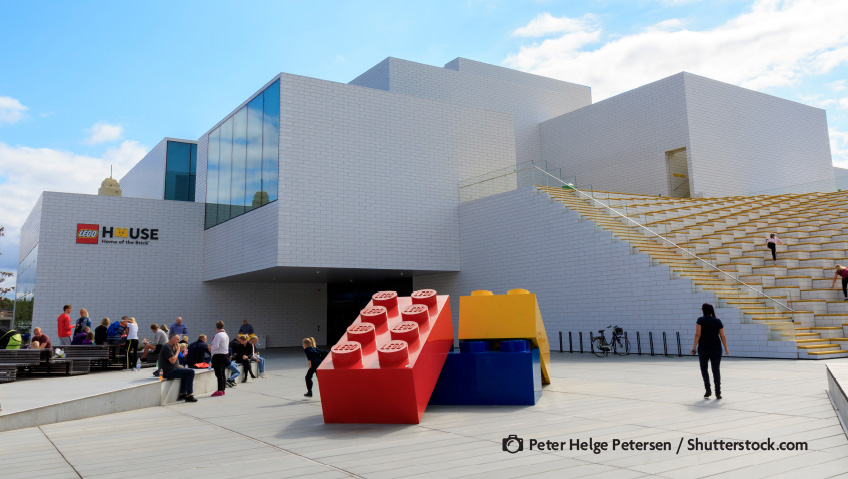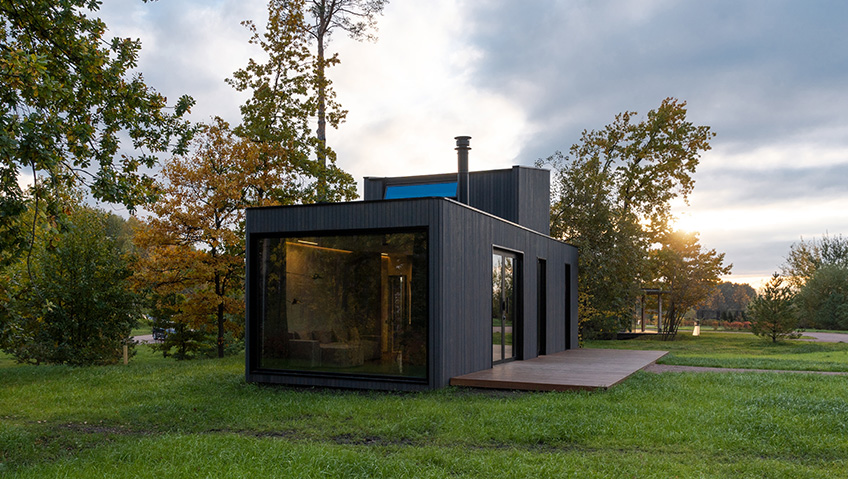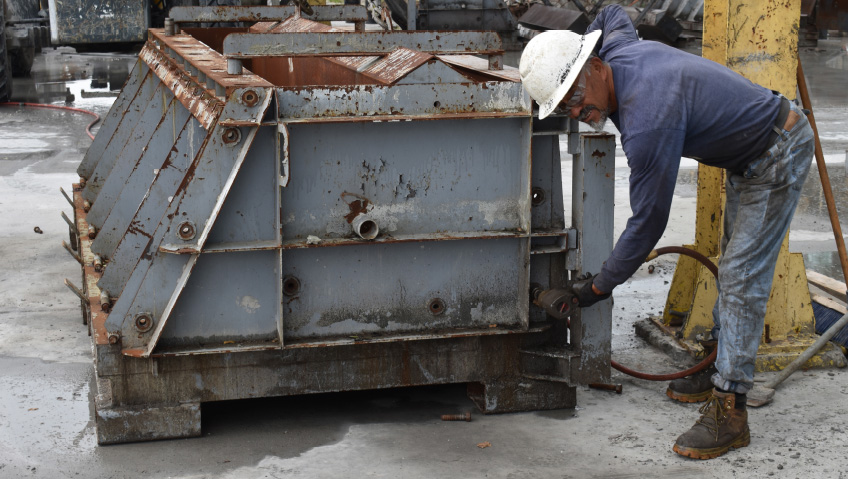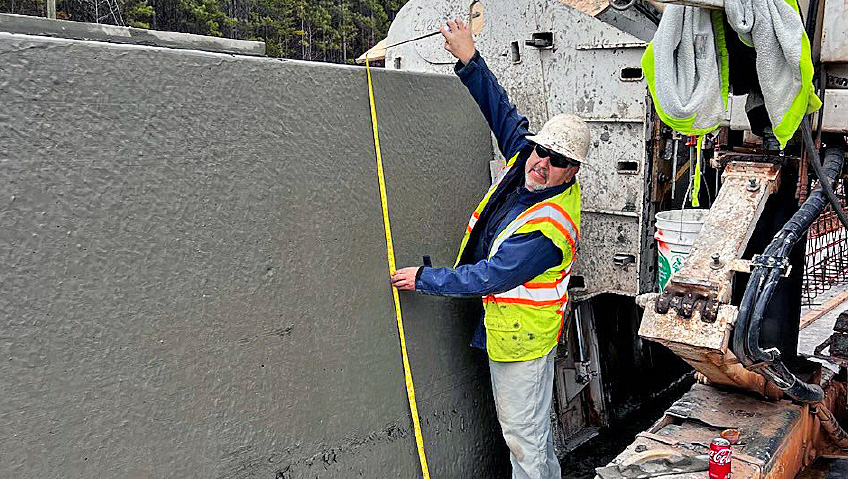Sometimes an invention comes along that seems perfect from the moment it was created. Almost a century ago, Danish carpenter Ole Kirk Christiansen made household products in his workshop, eventually adding simple wooden pull toys to his offerings. Demand grew, and Christiansen founded construction toy company LEGO® in 1932, named from the Danish for leg godt, or ‘play well.’ By the late 1940s, the company switched from wood to plastic—a relatively new material at the time—with Christiansen’s interlocking Automatic Binding Bricks becoming popular worldwide.
All these years later, LEGO®’s interlocking bricks remain popular with young and old alike. Over 220 million LEGO® sets are sold worldwide every year—about seven sets per second. And although there are countless themed sets available today based on Disney characters, Marvel comics, video games like Minecraft, and Braille Bricks for the visually impaired, classic LEGO® bricks remain as popular as ever.
The evolution of modular
Key reasons for LEGO®’s enduring popularity are its simplicity, its durability, and the endless possibilities it offers. Feel like dedicating a weekend (or longer) to erecting a castle inspired by The Lord of the Rings? Absolutely. Want to build a simple house on a foundation? No problem.
Like LEGO®, much of the success of modular construction comes from creating structures using prefabricated components. Although we think of modular buildings as being relatively new, the history of prefabricated structures goes back thousands of years. Moving from one place to another to hunt, nomadic tribes created huts out of branches and animal hides. Instead of leaving these shelters behind, nomads developed rudimentary systems which saw them dismantling these dwellings, taking the pieces with them, and rebuilding them elsewhere. This systemized building saved them not only the time spent recreating structures from scratch, but also the need to find wood and other materials.
As tools, techniques, and materials evolved, so did early modular building methods. Greeks and Romans made extremely precise stone blocks and, following exact measurements, these blocks were clamped together to create early modular structures.
In the book Components and Systems: Modular Construction – Design, Structure, New Technologies, the authors state, “The Romans can be credited with collecting, documenting and spreading a multitude of technical developments throughout the various regions of their empire. The Ten Books on Architecture by Vitruvius, from the first century B.C., established themselves as the foundation for the development of construction and contained instructions for modular building systems employing stone elements, which could be used to build temples in far-flung colonies.” Centuries later, Gothic cathedrals of the Middle Ages were built by skilled stonemasons using precise mathematical systems to create elaborate structures.
Years later, settlement of the North American Prairies in the 1860s saw the growth of transportable housing. Coinciding with advances in timber processing, these wooden structures were simple, yet effective. Around the same time in Europe, modular construction methods were used to create barracks and storage sheds which could be easily assembled, taken down, and moved as necessary. Manufacturing simple prefabricated sections led to construction methods still in use today.
Making it big
Despite its many advantages—including consistency, precision, speed of construction, flexibility, lower costs, reduced waste, and design flexibility—there was a long-held stigma against factory-made prefabricated structures compared to stick-built buildings. Now, faced with an urgent need for housing, lack of skilled trades, and growing environmental concerns over traditional construction waste, this stigma is fast disappearing.
As technology has advanced, the ability to make larger and larger modular structures has expanded. From the United Kingdom to Japan to the United States, builders have used a variety of techniques and materials over the years, including wood and cast-iron substructures. To meet the need for structures in British colonies, everything from modest cottages to large hospital and warehouse buildings were manufactured in sections in England, disassembled, shipped to Australia, and re-assembled. Soon, wood and cast iron were joined by prefabricated concrete.
As production methods improved, the need for more modular buildings grew, and materials like cast iron and concrete were heavy. Their introduction led to the development of durable, lighter products, including lightweight concrete made with pumice sand and Portland cement, as well as steel.
Today, the modular possibilities are virtually limitless. According to the Modular Building Institute (MBI), modular construction sees buildings made off site in controlled plant conditions. The process involves using the same materials and codes as conventionally built facilities, “but in about half the time,” and “without compromise.”
Building traditional structures on site often leads to delays, cost overruns, and other issues. Carpenters, bricklayers, and other trades can be delayed; rain, snow, heat, frost, and wind cannot be controlled. It isn’t unusual for tools necessary to complete the job to break, go missing, or be stolen. Building material shipments can be slow or may arrive incomplete. Modular buildings, conversely, are made under controlled factory conditions with components transported to the site. This eliminates waiting and wondering when the next load of lumber or steel will arrive.
In today’s modular building facilities, technologies such as Building Information Modeling (BIM), 3D printing, and robotics are being incorporated to make manufacturing faster and more accurate. Thanks to this technology, improved manufacturing, and lighter, more durable building materials, modular structures are larger and longer lasting than ever. Examples include Japan’s Nakagin Capsule Tower. Built in 1970 and demolished in 2022, it was hailed as an example of sustainability and recyclability. The structure encompassed 140 stacked and rotated capsules, each measuring 13’ by 8.2’ (4 m by 2.5 m). Although small by Western standards, the modest space was considered ample for residents, and served as a mixed-use residential and office building.
Historically, modular construction has been used to create everything from hospitals to hotels. In Ukraine, the Revival project was created to fill the need to house over 176 students. The brainchild of ZIKZAK Architects—who stated, “The war is causing irreparable damage very quickly. Our task is to build Ukraine even faster because people want to return home now!”—the unique modular system’s design enables rapid construction. Modular boxes comprise “floor slabs, ceiling tiles, and longitudinal and transverse wall slabs,” says Archello of Revival. Materials used include mineral wool in an aluminum framework.
A practical approach
In 2023, global management consulting firm McKinsey & Company published Making modular construction fit, a piece on the pros and cons of modular construction. “The case for modular construction in the U.S. is clear,” reads the article. “Manufacturing building components in factories and assembling them on site offers solutions to many of the construction industry’s challenges, which include high material prices, disrupted supply chains, and shortages of skilled labor.”
With industrialized production methods, modular building enables companies to optimize material utilization while reducing waste. Since attaching modules together on site is considerably faster and uses less labour than traditional construction, McKinsey states modular building techniques “could allow home builders to accelerate end-to-end project timelines by 20 to 50 percent while reducing costs by up to 20 percent. Moreover, modular projects may be easier to execute on urban job sites since they require less space for the storage and preparation of materials.”
Still, with its many advantages, there remains some reluctance toward modular construction. This is especially apparent in North America, where about four percent of the United States’ housing was made using modular methods, a tiny figure compared to 15 percent (for homes) in Japan and 45 percent in Sweden, Norway, and Finland.
The solutions, according to McKinsey, include modular companies adopting best-in-class manufacturing capabilities, “including sophisticated digital design platforms and lean, efficient production lines.” Another way modular can compete is by optimizing construction materials specific for individual modules, which not only reduces the amount of wood, steel, and concrete being used, but lowers manufacturing time and costs, transportation, and on-site assembly.
Only time will tell where the possibilities presented by modular construction will take us. And that time can’t come soon enough. As our global need for housing, hospitals, schools, and other buildings grows, the presence of large modular structures is sure to increase.






